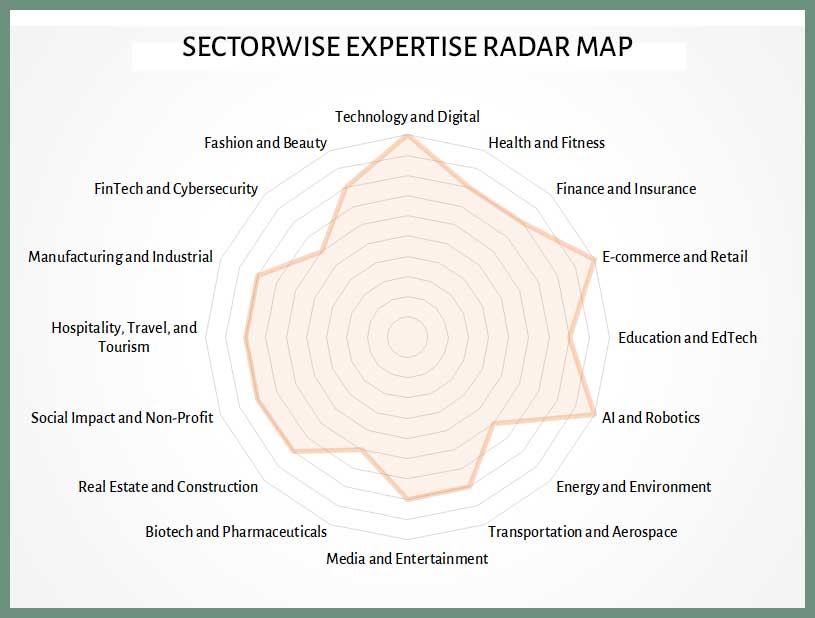
Explore comprehensive service packages and a refined content marketing process honed over 40 years. Tailored to elevate your brand.
In digital branding and content, settling for generic, one-size-fits-all solutions is a road to mediocrity. My approach is a harmonious blend of strategic precision, the compelling art of storytelling, and the meticulous science of user experience.
This isn’t just about delivering services; it’s about partnering on a transformative journey. It is a journey aimed at not just giving your brand a digital presence but elevating its stature, making it a force to reckon with, ensuring it doesn’t merely exist but dominates and thrives in the vast digital expanse.

Embarking on a digital branding adventure requires more than just vision; it demands a precise roadmap and expert guidance. Delve into a suite of services meticulously crafted over 40 years in the industry, each aimed at charting your brand’s unique path to resonance.
From strategy formulation to content creation, here’s an in-depth look at how I’ll co-create your brand’s digital legacy. Dive in and discover how your brand story will be told.
In my 40+ years of experience, I have handled challenging content marketing projects for brands from every critical industry. I have consulted in Digital/Content Marketing for nearly 125 brands of all sizes and nuances – including global megabrands and disruptive startups.
In the radar chart below, I have encapsulated my depth and breadth of domain expertise in each industry sector (rated on a scale of 1-10). This radar chart is accurate to the current moment. As with every professional, my expertise map tends to change its shape over time.
You can read my case studies of the most interesting projects handled in different sectors.

Some of the key clients over the years have included Boeing, Ford, Vivendi, Unilever, Glaxo SmithKline, HSBC, Credit Suisse, Wipro, Brooke Bond, Giorgio Armani, Mahindra & Mahindra, Apollo Hospitals, Sheraton Hotels, Orchid Pharma, Cadila Pharma, India Pistons, Kerala Tourism, Helpage International, Plan International, London Olympics 2012 … among others.
On separate pages of this website I have included diverse case studies you can browse through … as well as my portfolio of work samples of the different types of content created.
Do check these out!
Frequently, clients ask me, “Which industries do you excel in?” It’s an understandable question driven by the need to identify specialization or niche expertise.
Yet, my forte isn’t being tethered to one sector but fluently traversing multiple domains. This broad-based experience isn’t merely about surface-level acquaintance but about immersing in the intricate subtleties of each industry.
Multi-industry exposure continually enriches my toolkit, ensuring my recommended strategies are fresh and deeply resonant. I harness insights from diverse sectors, ensuring your brand finds its place and stands out remarkably.
This cross-sector background uniquely positions me to craft hybrid strategies — potent formulations that amalgamate the finest elements from various landscapes.

When you entrust me with your content marketing, I meticulously immerse myself in your sector and niche, grasping every key concept.

Once briefed on your content needs, I swiftly learn and absorb the state-of-the-art practices unique to your sector and niche.

After understanding your industry’s specifics, I tailor brand content strategy uniquely for the distinct needs of your brand.

I create content that ensures your brand messaging works wonders, specifically with the target audiences from your sector and niche.

I employ an iterative process, refining content based on rigorous testing and feedback, to guarantee its power within your market.

I harness specialized analytics tools to measure success, ensuring that your content not only shines but also drives tangible outcomes.
This is where all brand content marketing should begin. You could find this package useful if …
Click below to expand and view the package.
Strategy Planning usually precedes all other content marketing activity. It consists of 8 sequenced services that cover research, insight mining, brainstorming, and consolidation of all the strategic decisions and plans to shape the brand content marketing.
WHAT DOES THIS PACKAGE COVER?
The 8 elements of this package are not available as separate services as they all dovetail into one another.
The 4 packages below are for brands with a content strategy but wanting a new (or revised) identity or website.
You could find these packages useful if …
Click to expand and view each package.
This sub-pack involves creating a logo and tagline for your brand (or revising an existing identity). The price also includes the development of a Brand Guidelines Manual (Lite) to guide brand identity usage.
This sub-pack includes the visual design of the website’s overall theme and the design templates for the various key sections (all created with Elementor Pro for a WordPress site). What is the difference between a Website Design Theme and Design Templates for Website Sections? Read on …
A Website Design Theme goes beyond mere aesthetics; it’s the art and science of crafting a digital environment for a brand. A well-designed website ensures visitors can easily navigate and interact with the content, leading to a positive user experience. This involves a visually appealing layout and considers user pathways, mobile responsiveness, and the overall look and feel that best represents the brand.
Design Templates for Website Sections are pre-structured layouts created to ensure consistency and coherence across various parts of a website. These templates simplify the process of adding new content or pages, ensuring that each section retains a uniform look and feel, aligning with the website’s overall design ethos. Using templates, brands can efficiently update content while maintaining a cohesive and user-friendly design.
A basic set of 6 design templates could include:
(This sub-pack does not cover writing or creating content for the actual pages and posts of the website. The next sub-pack on this page deals with website content creation… click here to read that.
Also, the costs of the site domain name, site hosting, and SSL certificate are third-party costs and would not be included in my sub-pack.)
The following 1o basic pages are usually required for a starter website. The pages for which I can create/write content in this sub-pack would be:
(While the different pages would require different lengths of copy, the maximum length on any page requiring long-form copy would be 2500 words.
My content creation services would include 2-5 visuals as required for each page, except the Home Page, which may require 10-20 visuals. These will be sourced from stock visuals or AI-generated visuals. If original art needs to be created, the bespoke art/graphics sub-pack can be accessed by clicking here.
While we will give you a sample copy for the legally mandatory pages, these pages will need to be vetted/written by your legal expert, and by no means should our sample copy be used as the final copy.
EXTRAS TO CONSIDER:
A starter website would need a minimum of 10 basic pages as listed below:
For the whole website, Performance Analytics Tool Integrations and certain other services will be needed as one-time activities.
Further, for the basic 10 starter pages of the website, SEO (Search Engine Optimization) Services will be needed.
This sub-pack, therefore, covers both the one-time activities and the first month’s starter SEO Services.
One-time activities:
SEO activities (for the first month):
(There is another package for ongoing monthly SEO activities, for existing or added new pages, if you click here.)
The 4 packages below are for brands with a brand content strategy and an online website presence already in place.
You could find these packages useful if …
Click to expand and view each package.
I get asked frequently: Why are blogs needed when the website pages have all the information a brand wants to say about itself? The answer lies in the question: the website puts out the communication the brand wants to say about itself. But what about addressing customers’ pains and needs and showing how the brand can have empathy and usefulness in helping customers – the way to a customer’s heart, trust, and wallet? Read on …
Blogs can be written in many ways and lengths, depending on how best a subject can be addressed. Here are some variations of format and length you can see in my portfolio:
(All blog posts I create would have 3-5 images (sourced from stock visuals or research data charts or AI-generated). If original art is required to be created, the sub-pack for bespoke art/graphics can be accessed by clicking here.
Blog posts with fewer word counts do not fare well on rankings or performance, so most of my clients prefer blog posts with, on average, 2500 words. They are data-driven, value-rich, engaging, and eminently practically useful posts, written with your unique Brand DNA in mind to take your brand towards its goals and market eminence.)
Social media content usually falls into two types:
Social Profile Creation refers to setting up and optimizing online profiles for businesses or individuals on social media platforms. It goes beyond merely registering an account. This involves selecting an appropriate username, adding a high-resolution profile picture, crafting a compelling bio or description, linking to other platforms or websites, and ensuring brand consistency across visuals and content. A well-crafted social profile serves as a brand’s or individual’s digital face, offering a snapshot of who they are and what they stand for.
Social Posts Creation pertains to developing content designed for sharing on social media platforms. These can range from text-based status updates to visual content like images or infographics, short-form videos, polls, and more. These posts aim to engage, inform, entertain, or inspire the target audience, fostering interaction and promoting brand visibility. Compelling social posts blend creativity and strategy, ensuring content resonates with the audience while aligning with the brand’s goals and voice.
Both social profiles and social posts require not just content writing and visual support; they also need well-researched hashtags.
Visual support can be of many types – static graphics, animations, videos, etc.
To understand how short-form social posts could be written, see a sample in my portfolio.
(If original art is required to be created, the sub-pack for bespoke art/graphics can be accessed by clicking here.
A social post, created once, can technically be used on any number of social channels. But social posts written or designed differently for each social media channel – such as Facebook, Twitter, Instagram, LinkedIn, etc. – will no doubt have far stronger results, since target audience characteristics and behavior are very nuanced from channel to channel.)
There are two types of content that can be shot off by brands to land directly into the email boxes of customers. Here they are:
Emails are direct and personalized communication tools that reach recipients for various purposes, including product updates, promotions, reminders, or follow-ups. They are essential in fostering a one-on-one connection between a brand and its audience.
Effective emails are concise, relevant, and tailored to the recipient’s interests, often leveraging segmentation and personalization techniques. They have clear calls to action, are mobile-responsive, and are designed to encourage engagement, be it making a purchase, reading a blog post, or attending an event.
Newsletters are regularly distributed publications—usually through email—that keep subscribers informed about recent news, updates, or insights related to a particular topic or brand. They are excellent tools for building and maintaining ongoing relationships with an audience, offering value through curated content, exclusive deals, or expert insights.
A well-constructed newsletter balances informational and promotional content, ensuring readers find consistent value in every edition and look forward to its arrival in their inbox.
To get an idea of how a newsletter could be written, see a sample in my portfolio.
(If email marketing content items require supportive images or graphics, they could be sourced from stock visuals or research data charts, or AI-generated.
If original art is required to be created, the sub-pack for bespoke art/graphics can be accessed by clicking here.)
In the ever-evolving digital landscape, ongoing SEO is indispensable for brands aiming to maintain and grow online visibility.
Search engines constantly update their algorithms to deliver the most relevant content to users. Brands risk losing their hard-earned search rankings to competitors and newer content without a sustained SEO effort.
Moreover, consumer behaviors and trends shift, keywords evolve, and website performance can fluctuate, all affecting search visibility.
By prioritizing ongoing SEO, brands ensure they’re consistently aligned with these changes, optimizing their online footprint, driving organic traffic, and reinforcing their authority in the digital realm.
Ongoing SEO services can be of two types.
Typical recurring SEO activities would include:
The 9 packages below are for brands that already have a content strategy, an online presence, and ongoing content creation.
You could find these packages useful if …
Click to expand and view each package.
Websites, as they grow, may require additional pages to be created. They may need microsites or particular campaign pages.
What are microsites?
A microsite is a small group of web pages that function as a distinct entity within an existing website or as a standalone site. They are typically used for a specific purpose different from the leading website’s primary objective. Here are some critical points about mini-sites:
(All web pages created by me would have 3-5 images (sourced from stock visuals or research data charts, or AI-generated. If original art is required to be created, the sub-pack for bespoke art/graphics can be accessed by clicking here.
Webpages with fewer word counts do not fare well on rankings or performance, so most of my clients prefer pages and posts with, on average, 2500 words. They are data-driven, value-rich, engaging, and eminently practically useful posts, written with your unique Brand DNA in mind to take your brand towards its goals and market eminence.)
Ebooks or guides can vary in content length, whether succinct 10-12 page lead magnets (designed to captivate audiences and incentivize subscriber opt-ins) or expansive pieces that delve deep into brand-centric topics.
To understand how a short lead magnet ebook is usually written, see a sample in my portfolio.
To understand how a script is usually written, see a full-length ebook sample in my portfolio.
Ebooks can help position your brand as a thought leader. You may want to commission ebooks you can sell off your website or on Amazon.
The most important part of an ebook is its structure. It has to stay on topic, have lots of storytelling and examples – and never meander off-track in a bid to become a lengthy piece of writing.
Also, ebooks have to be written with the understanding level of readers in mind – whether they are beginners to a topic or of intermediate or advanced levels. Some ebooks may need to address all three types of audiences through a single comprehensive ebook.
(All ebooks created by me would have 3-5 internal images – sourced from stock visuals, research data charts, or AI-generated. These do not include the ebook cover design, created separately as original graphics. Click here to see my original visual content sub-pack.)
I cover six different types of writing here. They fall into two broad classes – Scripts and Summaries. Each format, while holding distinct differences, serves its unique purpose in content strategy, catering to varied audience preferences and engagement styles.
TYPES OF SCRIPTS:
TYPES OF SUMMARIES:
(If videos, webinars, scripts, or summaries created by me require supportive images or graphics, these could be sourced from stock visuals, research data charts, or AI-generated.
If original art is required to be created, the sub-pack for bespoke art/graphics can be accessed by clicking here.)
Whitepapers, case studies, and personal bios serve distinct functions within the content ecosystem. However, they are all tools brands can employ at different stages of the buyer’s journey to inform, persuade, and establish credibility.
In the broader context of a content strategy, each tool serves as a touchpoint that nudges the potential client closer to making a decision. While they might cater to different stages, they collectively support a brand in conveying its value proposition, establishing its authority, and building trust among its audience.
(If these content items require supportive images or graphics, they could be sourced from stock visuals, research data charts, or AI-generated.
If original art is required to be created, the sub-pack for bespoke art/graphics can be accessed by clicking here.)
All three content types – magazine articles, blogs, and press releases – serve as platforms for brands or individuals to communicate their message to a larger audience. They are tools for external outreach, aiming to inform, establish authority, or promote something noteworthy. Each plays a role in strengthening brand presence and engagement across different channels and audiences.
(If these content items require supportive images or graphics, they could be sourced from stock visuals, research data charts, or AI-generated.
If original art is required to be created, the sub-pack for bespoke art/graphics can be accessed by clicking here.)
In the digital age, the ability to communicate a message effectively and persuasively has never been more essential. Slide decks, especially those tailored for pitches, stand as the linchpin of this narrative, distilling complex ideas into digestible and impactful visuals and text.
My proficiency in crafting slide decks has been honed from my personal experiences – successfully pitching to investors and winning over clients. Whether seeking funding, securing a client, or simply sharing a vision, a meticulously crafted slide deck can be a brand’s most formidable asset.
(If these content items require supportive images or graphics, they could be sourced from stock visuals, research data charts, or AI-generated.
If original art is required to be created, the sub-pack for bespoke art/graphics can be accessed by clicking here.)
In a world saturated with content, the ability to craft copy that not only attracts attention but compels action is paramount. Persuasive copywriting is the linchpin that connects brands to their audiences, converts leads into customers, and builds brand loyalty.
My prowess in this domain has been meticulously sharpened during my formative years at three multinational advertising powerhouses: Ogilvy, J. Walter Thompson, and Lowe Lintas.
(If these content items require supportive images or graphics, they could be sourced from stock visuals, research data charts, or AI-generated.
If original art is required to be created, the sub-pack for bespoke art/graphics can be accessed by clicking here.)
The digital era has revolutionized how we learn, and at the heart of this transformation lies meticulously designed courseware content.
With its multidimensional approach encompassing research, scripts, and videos, courseware becomes more than just educational material—it becomes a beacon of knowledge and empowerment.
(If courseware items require supportive images or graphics, they could be sourced from stock visuals, research data charts, or AI-generated.
If original art is required to be created, the sub-pack for bespoke art/graphics can be accessed by clicking here.)
Bespoke visual content, created originally, can be of many types. Just a few examples are:
(I offer advice and guidance for clients who need help choosing the right visual elements to go with their brands. The wrong visual style can kill a brand – the right style can lift a brand to new heights.)
With over 40 years of experience in advertising and content strategy, I’ve honed a unique, results-driven approach that draws from a vast expanse of cross-sector insights.
A starting budget of $10,000 -$25,000 and an ongoing monthly budget of $5,000-$15,000 is the usual quantum that small to medium-sized clients of mine are comfortable with … while larger corporates go far higher.
This budget would reflect and acknowledge my depth of expertise, whereby I can ensure every brand I handle can significantly distinguish itself.
This budget usually helps cover a reasonably comprehensive solution, encompassing strategic consultation, web development, and a generous content package tailored to your ongoing needs.
Return on Investment (ROI) from content marketing is multifaceted. Industry benchmarks indicate that content marketing can generate 3X leads per dollar spent compared to traditional marketing strategies.
Beyond direct revenue, effective content enhances brand recognition, boosts organic search rankings, fosters customer loyalty, and positions your brand as a thought leader. Over time, a consistent and quality content strategy can reduce customer acquisition costs and increase customer lifetime value.
Given my unique approach and extensive experience, my clients often find their ROI higher than typical industry standards.
While various market rates depend on geography, industry, and specific service, my rates reflect the accumulated knowledge, cross-sector versatility, and unparalleled expertise I bring to the table.
Think of it as an investment not just in content but in a strategy rooted in four decades of evolving, adapting, and succeeding in the ever-changing digital landscape.
Content marketing is a long-term strategy. While you might see initial engagement and traffic boosts in the first few months, tangible ROI in conversions and revenue typically becomes evident after 6-12 months. The timeline can vary based on your specific industry, competition, and the quality of content produced.
Outsourcing content strategy and development offers several distinct advantages over an in-house team:
Having an in-house team can benefit day-to-day tasks and real-time collaboration. However, outsourcing often delivers superior results for strategic insights, high-quality content, and specialized expertise.
Brands grow in value through content marketing by establishing authority, trust, and a strong online presence. High-quality content addresses user queries, solving problems and providing value.
Over time, this positions your brand as a go-to resource, fostering loyalty and driving organic growth. Consistent content also aids in better search engine rankings, driving more organic traffic and increasing brand visibility.
Delve deeper into the tangible results of my unique approach by exploring my case studies and portfolio. Each piece is a testament to the harmony of experience, an unconventional mindset, and cross-sector adeptness.
If you’re eager to elevate your brand’s narrative and strategy, don’t hesitate to tap into my wealth of knowledge. Make it work wonders for you.

"As a Content/Brand Specialist, and SEO/UX Writer, I can help transform your brand's online presence. I can lift it with innovative ideas to take it to an enviable position. Let's collaborate to create a captivating brand story, engage your audience, boost your online visibility, and increase your ROI. Take the next step towards your brand content success and contact me today."
Shobha Ponnappa
I Bring You:
Content Marketing That’s “Unusual By Strategy” … Tips, Tricks, Tactics, Techniques, Trends, Training.
Get my weekly ContenTracker Newsletter packed with loads of content marketing ideas – proven and unusual.
Get a free download of my ebook on “50 Unusual Ways To Use AI In Content Marketing” … and transform your success.

Just fill in the form to join my community … we have big and small brands for company. You’ll stay on the speedway to growth.
KEY TOPIC CATEGORIES COVERED ON THIS SITE:
COPYRIGHT © 2024. SHOBHAPONNAPPA.COM. ALL RIGHTS RESERVED.

Just fill in this form and get this awesome ebook in your email inbox. Plus … each week you’ll receive my ContenTracker Newsletter that brings you tips, tricks, tactics, techniques, trends, and training on the latest in content marketing.